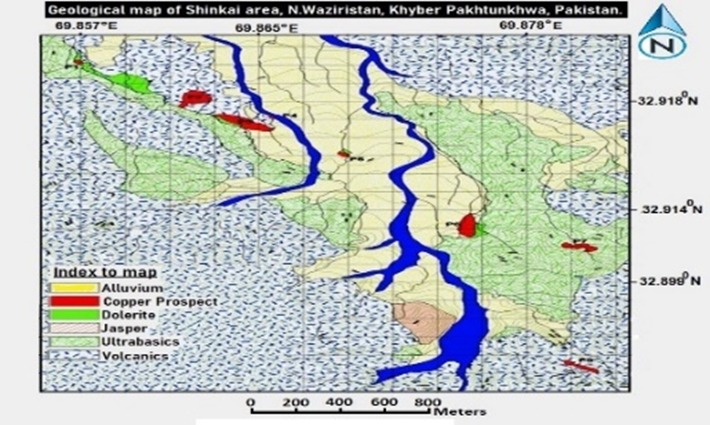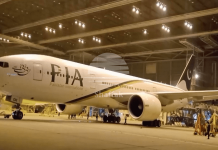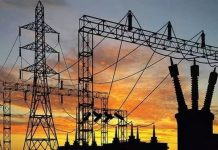ISLAMABAD: The tribal areas of Pakistan have an abundance of base and precious metals, and their cohesive and non-stop mining can help the country overcome its socioeconomic insecurities, reports WealthPK.
Discussing with WealthPK the importance of framing the geological exploration activities in the ophiolitic complex (oceanic crust created in a mid-oceanic ridge) in Pakistan, Principal Geo-scientist in the Global Mining Company Islamabad, Muhammad Yaqoob Shah said, “Serious working to explore and use the earthen treasures of Pakistan can take it out of the vortex of economic crisis. The tribal areas in Pakistan are laden with a variety of precious minerals. i.e., copper, gold, silver, cobalt, nickel, etc. In Khyber Pakhtunkhwa (KP) province only, primary copper mineralisation can be seen mainly in Datta Khel, Shinkai, Manzar Khel, Madar Algada, Khaddar Khel, Spin Kamar, Shawal, Razin, Pre Ghar, Makin, Degan, Manra in South Waziristan, and Pai Khan in North Waziristan districts.”
“The ophiolitic belt at the Pak-Afghan border in Waziristan district, covering an area of about 1127 sq. km, is rich in copper and many other precious minerals. The rock sequence in this belt mostly consists of sea bed environment including ultrabasic rocks; basaltic pillow lava; andesite; gabbro sheeted dykes; dacite along with their equivalents; i.e., diorite, granodiorite, etc. The sequence of sedimentary formations in this area is characterised according to the presence of pelagic sediments, i.e., limestone, jasperite, etc. Copper mineralisation in this area is strongly indicated by an on-the-ground associated stockwork of scattered gossans,” he said.
Recalling memories, Yaqoob Shah said the defunct authorities (1971-1996) – FATA Development Corporation, Governor Secretariat FATA, and FATA Development Authority (FDA), respectively – did exploratory work in the area.
“From identification to subsequent exploration of copper and other precious minerals, a multitude of activities was done, i.e., multi-scaled geological mapping, diversified sampling, geophysical surveying, etc. Through core drilling, 15 prospects of copper were demarked only in Shinkai. This area is still a subject of further exploration using techniques, i.e., induced polarisation, and added core drilling,” he said.
“It is important to mention that the total area of core drilling consisted of 13,700 meters. From there, 37,000 samples were collected for chemical analysis, including 8,639 core samples, 2,856 hard rock samples on a grid pattern, and 37 geophysical sub-surface profiles. The results proved the existence of 8 million tons of copper-bearing ore. In the vicinities of Shinkai, only 27 million tones of ore were demonstrated. The average grades of minerals found in this ore were concluded as copper 0.8%, sulphur 10%, cobalt 0.11%, and silver having more than 1gm/ton, etc.”
Yaqoob continued, “To reassess and verify the said findings, the services of a Chinese copper expert, Wang Zhitian, were sought. After his own field observations, he endorsed the accuracy and authenticity of the data generated by the PMDC. He also opined that more than 50 million tons of reserves could be projected by further geological exploration and core drilling in the vicinities of copper prospect in Shinkai. During the same period, about 36 previously drilled samples taken from Shinkai were reanalysed and the ratio of gold contents between 0.2- 1.57 g/t was confirmed. At this stage, all the official activities got a sudden stop.”
Yaqoob said the KP government had requested the PMDC in 2007 to operationalise the said project by providing technical assistance and funding from the FDA through a joint venture.
He said during 2007– 2019, the PMDC prepared detailed geological maps of the ‘Shinkai Copper Prospect’ covering an area of 16 sq. km for geophysical surveys and diamond drilling for some of the projects.
Topo-geological map of 4 sq. km area was prepared and a geophysical survey at two prospects over a length of 9,900 meters in Shinkai was accomplished. Thirty holes of 7,071 meters deep were drilled with diamond drills out of which 28 holes captured mineralised zones of economic grade having 0.3% to 1.00% of copper content.
During this second phase of exploration, 1,742 samples were analysed for occurrence of cobalt, silver, copper, iron, zinc, and lead, and inferred reserves of an average grade of 0.25% copper were calculated as 1.6, 6.6, and 26,35 million tonnes, respectively.
The Mineral Exploration & Development Organization (MEDO), a subsidiary of The Frontier Works Organization (FWO), took the lease of 30 sq. km area in Shinkai for 30 years and started operating an open-pit mining project in 2016 which is designed up to the depth of 271 meters. A copper beneficiation plant has also been installed at the mine opening.
MEDO has mined out one million tons of copper and other precious metals bearing ore from only one out of 11 already established prospects in Shinkai. Since Nov. 1, 2019, MEDO has upgraded the plant having the capacity to process 25-30 tons of copper-bearing ore per day.
Yaqoob said for the collective national interest, multidimensional exploratory activities should be revived and continued in other parts of this precious complex deposit. He emphasised that the federal/provincial governments should frame a comprehensive plan to explore the whole ophiolitic belt.





